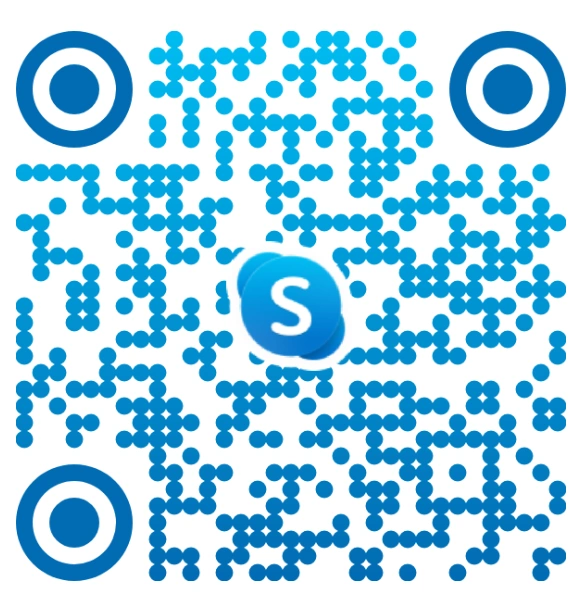Top LLM Agent Frameworks to Build Powerful Autonomous AI Systems
In the age of automation and artificial intelligence, LLM agent frameworks are revolutionizing how we build autonomous AI systems. These powerful AI agent frameworks enable developers to harness the capabilities of large language models (LLMs) like GPT, Gemini, and Claude to create smart, task-driven, and adaptive software agents. By integrating memory modules and multimodal inputs, these frameworks allow LLM agents to understand context, process images or code, and adapt their behavior over time.
Modern LLM frameworks also provide seamless tool and API ecosystems, giving agents live data access and real‑time decision‑making capabilities. As a result, businesses can deploy systems that plan, prioritize, and execute complex workflows with minimal human oversight—a massive leap beyond traditional rule‑based bots. From customer support chatbots to autonomous research tools, these agent‑based AI systems are reshaping every industry.
Whether you’re a developer, tech founder, or AI enthusiast seeking the best LLM frameworks in 2025, understanding how to evaluate and implement these solutions is critical. In this blog, we’ll explore the top LLM agent frameworks, compare their features—such as autonomy, scalability, and ecosystem support—and showcase real‑world LLM agent examples. We’ll also highlight key use cases and examine future trends to help you choose the best LLM agent framework for your next project
What is an LLM Agent Framework?
An LLM agent framework is a software toolkit that helps developers create, manage, and scale agents powered by large language models. These agents can take actions, make decisions, access tools, retrieve information, and even collaborate with other agents.
Key components of these frameworks include:
- LLM orchestration frameworks to handle model input/output
- Planner modules to structure actions
- Tool APIs for task execution
- Memory modules to store context
- Agent workflow LLM orchestration
How LLMs Power Intelligent Agents
Unlike traditional bots, LLM agents can reason, adapt, and communicate in natural language. Using advanced instruction-tuned models, these agents can analyze goals, generate subtasks, and interact with external tools, making them ideal for autonomous workflows in AI.
Agents vs. Traditional AI Workflows
Traditional AI systems follow pre-defined logic or models trained for specific tasks. In contrast, agent-based LLM systems combine reasoning with dynamic execution. This enables autonomous decision-making, AI capable of multi-step task handling, real-time learning, and cross-domain functionality.
How LLM Agent Frameworks Work
LLM agent frameworks combine planning, execution, and memory to enable intelligent agents that can think, act, and learn over time. By orchestrating prompts, tool integrations, and context storage, they turn large language models into fully autonomous AI systems capable of complex, task-driven workflows.
1. Core Architecture: Planner, Executor, Memory
Most LLM agent frameworks follow a structure:
- Planner: Decides what the agent should do
- Executor: Uses tools/APIs to perform tasks
- Memory: Stores short-term or long-term context
This structure enables task-driven AI agents to be both reactive and proactive.
2. Tool Integration (APIs, Plugins, Webhooks)
Frameworks integrate with various external tools (search, APIs, plugins), allowing agents to access real-time data, make decisions, or perform actions. Popular options include:
- OpenAI agent toolkit
- Hugging Face Transformers for agents
3. Role of Prompt Engineering and Orchestration
Prompt design is critical in LLM-powered agents. The framework uses prompt templates to guide the model’s behavior, often using methods like ReAct framework LLM or chain-of-thought reasoning. This allows for accurate, contextual decisions and smooth agentic LLM framework execution.
Key Features of a Powerful Agent Framework
When choosing between different LLM agent frameworks, it’s important to assess the core features that impact performance, scalability, and autonomy. These features determine how effectively the agent operates in real-world scenarios and adapts to complex tasks in autonomous AI systems. Partnering with a trusted AI automation services provider can help you evaluate these frameworks, customize them to your needs, and accelerate deployment with expert guidance.
Autonomy & Reasoning
A strong agent-based AI system must be capable of independent thinking, multi-step planning, and autonomous decision-making AI processes. This enables agents to take action without repeated human intervention and drive end-to-end task completion.
Memory Management
Well-implemented memory modules for LLM agents allow them to remember past conversations, retrieve information, and improve contextual responses. Long-term memory is critical for personal assistants, chatbots, and ongoing workflows.
Multimodal Capabilities
Advanced agentic LLM frameworks support more than just text — they handle images, audio, and even code. This expands use cases to creative industries, data science, customer service, and beyond.
Task Prioritization and Execution
Intelligent agents must prioritize tasks based on urgency, deadlines, or data triggers. LLM-powered agents with dynamic task queues ensure that time-sensitive and high-value actions are completed first.
Scalability and Customization
Top AI agent frameworks offer flexible architectures that scale across cloud, on-prem, or edge deployments. They also allow customization, making them suitable for diverse environments like startups or enterprise automation platforms.
Real-Time Decision Making
The ability to process live data and make split-second decisions is crucial in finance, logistics, and smart operations. Agents with real-time decision-making capabilities can react instantly and intelligently to new information.
Plugin/Tool Ecosystem Support
Robust integration with third-party APIs, databases, and internal services is a must. The best LLM frameworks offer seamless connections to tools like Zapier, Notion, SQL, and CRMs, empowering agents to take real actions.
Also Read : AI in Product Development
Top 10 LLM Agent Frameworks in 2025
As the adoption of LLM agent frameworks grows in 2025, several standout platforms are empowering developers to create smarter, faster, and more autonomous AI systems. Whether you’re building multi-agent architectures or lightweight assistants, these frameworks offer unique features, capabilities, and use cases. Below is a breakdown of the top LLM agent frameworks that are shaping the future of autonomous AI systems.
| Framework | Key Features | Ideal For | Open Source |
| LangChain | Modular chains, memory, tools, agents | Complex agent orchestration | Yes |
| AutoGen | Multi-agent architecture, system control | AI collaboration, simulations | Yes |
| CrewAI | Role-based teams, workflow coordination | Multi-role automation | Yes |
| SuperAGI | Full-stack agent platform | Enterprise AI systems | Yes |
| BabyAGI | Lightweight task loop system | Learning and prototyping | Yes |
| AgentLLM | GUI for agent configuration | Customer support, automation | Yes |
| Haystack | RAG, NLP, document processing | Knowledge base systems | Yes |
| AutogenStudio | Visual design, real-time collaboration | Prototyping, non-coders | Yes |
| LlamaIndex | External data indexing for LLMs | Knowledge-intensive tasks | Yes |
| OpenAgents | Extensible, open-source agents | Custom developer use-cases | Yes |
1. LangChain
LangChain is one of the most widely used LLM agent frameworks, offering powerful modular components like chains, memory, and agent interfaces. It enables developers to build autonomous AI systems with real-time reasoning and tool integration. With a growing ecosystem, LangChain supports advanced use cases such as research tools, enterprise chatbots, and automation pipelines.
Key Features:
- Modular chains to link prompts and responses
- Support for memory modules and retrieval
- Seamless integration with tools and APIs
- Agent interfaces to automate decision-making
- Broad ecosystem with templates and plugins
Pros and Cons:
| Pros | Cons |
|---|---|
| Large and active developer community | Requires coding knowledge |
| Highly flexible and customizable | Learning curve for beginners |
| Strong tool and memory support | Can be overkill for small apps |
Use Cases:
- Enterprise chatbots with tool access
- Research agents capable of autonomous browsing
- Workflow automation with human-agent interaction
2. AutoGen by Microsoft
AutoGen is a multi-agent LLM framework developed by Microsoft that allows seamless communication between agents and humans. It supports system message control, task delegation, and conversational AI logic. Ideal for simulation and AI collaboration tools, AutoGen helps developers build intelligent agent teams with clear dialogue flows and autonomous reasoning mechanisms.
Key Features:
- Multi-agent conversation flow
- Human-in-the-loop interaction
- Control over messages between agents
- Structured communication patterns
- Integration with OpenAI models and APIs
Pros and Cons:
| Pros | Cons |
|---|---|
| Supports complex multi-agent systems | Configuration can be complex initially |
| Controlled message design | Still maturing as an ecosystem |
| Strong for simulations and collaboration | Requires orchestration logic |
Use Cases:
- Multi-agent AI simulations
- AI collaboration assistants
- Dynamic task delegation between agents
Also Read : AGI vs. ASI: What Enterprises Need to Know About the Next AI Revolution
3. CrewAI
CrewAI is an agentic LLM framework designed to orchestrate multiple agents through defined roles and responsibilities. It simplifies complex task automation by organizing agents into structured workflows. Its YAML-based design and focus on role-specific behavior make it perfect for creating agent-based AI systems that work collaboratively to complete advanced multi-step tasks.
Key Features:
- Role-based agent setup
- Lightweight and flexible architecture
- Easy YAML configuration for tasks
- Agent collaboration within teams
- Simple onboarding for developers
Pros and Cons:
| Pros | Cons |
|---|---|
| Role-based logic simplifies design | Limited support for complex tools |
| Lightweight and fast | Smaller community and resources |
| Great for structured workflows | Less modular than LangChain |
Use Cases:
- Automating business operations
- Creating agent teams for editorial work
- Collaborative virtual assistants
4. SuperAGI
SuperAGI is a full-stack LLM agent platform designed for enterprise-grade deployment. It includes a dashboard, task queue, memory support, and monitoring tools. With features like real-time execution tracking and scalability, SuperAGI is well-suited for industries looking to automate business processes and deploy production-ready autonomous AI systems.
Key Features:
- Visual dashboard for monitoring agents
- Task queue and scheduling system
- Persistent memory support
- Real-time debugging tools
Scalable for enterprise use
Pros and Cons:
| Pros | Cons |
|---|---|
| Full-stack features out-of-the-box | Slightly heavier than other tools |
| Intuitive agent management | Not ideal for beginners |
| Good for production deployment | Requires setup and config |
Use Cases:
- R&D automation in enterprises
- Logistics and supply chain agents
- Strategic planning assistants
5. BabyAGI
BabyAGI offers a lightweight, loop-based architecture for creating task-driven AI agents. It’s ideal for beginners and developers who want to prototype agent behavior quickly. While it’s not built for enterprise-scale tasks, it’s a valuable learning tool for understanding the fundamentals of LLM-powered agents and autonomous workflows.
Key Features:
- Simple task prioritization loop
- Minimalist agent setup
- Rapid prototyping friendly
- Ideal for understanding agent logic
- Quick testing of LLM behavior
Pros and Cons:
| Pros | Cons |
|---|---|
| Easy to understand and implement | Not suitable for complex projects |
| Great for experimentation | No UI or management system |
| Lightweight and fast | Limited tool integration |
Use Cases:
- Learning how agent systems work
- Testing new LLM prompts and strategies
- Quick automation of repetitive tasks
6. AgentLLM
AgentLLM provides a GUI-based platform for building and managing LLM agents without writing extensive code. It supports modular integrations with platforms like Discord and GitHub, and is ideal for task automation and user support scenarios. The visual interface makes it accessible to both technical and non-technical users developing AI agent frameworks.
Key Features:
- Web-based UI for managing agents
- Supports Discord, GitHub, and APIs
- Drag-and-drop workflow builder
- Multi-agent orchestration made simple
- Real-time agent logging and tracking
Pros and Cons:
| Pros | Cons |
|---|---|
| User-friendly GUI | Less control for advanced users |
| Works well with third-party tools | Limited flexibility in logic flow |
| Great for automation use cases | Smaller dev ecosystem |
Use Cases:
- Customer service agents
- Internal automation workflows
- Community or Discord bots
7. Haystack
Haystack excels in handling retrieval-augmented generation (RAG) and NLP-driven search tasks. This agent-based LLM framework is optimized for document-heavy environments, enabling seamless integration of LLMs with knowledge bases and enterprise data. Its modular and open-source design makes it powerful for building document-focused AI agents.
Key Features:
- Built-in document search and retrieval
- Agent-like modular architecture
- Support for summarization and Q&A
- Scalable indexing system
- RAG-ready for enterprise search use
Pros and Cons:
| Pros | Cons |
|---|---|
| Ideal for document-based agents | Less agent autonomy than others |
| Powerful RAG support | Needs setup for indexing |
| Highly modular and open source | Focused on NLP-heavy use cases |
Use Cases:
- Legal document search
- AI-powered customer support
- Corporate knowledge retrieval
8. AutogenStudio
AutogenStudio is a no-code LLM agent framework that focuses on visual workflow design for rapid prototyping. Its drag-and-drop interface allows users to build and test agent behavior without writing code. Ideal for teams, educators, or low-code developers, it simplifies the development of collaborative, real-time agent workflows.
Key Features:
- Visual editor for agent flows
- Real-time prototyping tools
- Collaboration and sharing features
- Agent component marketplace
- Drag-and-drop orchestration
Pros and Cons:
| Pros | Cons |
|---|---|
| No-code environment | Limited customization for devs |
| Great for teams and educators | Less powerful logic handling |
| Easy to prototype and test | Not ideal for production use |
Use Cases:
- Internal team demos
- Educational workshops
- Fast concept validation
9. LlamaIndex (GPT Index)
LlamaIndex, formerly known as GPT Index, connects large language models to structured and unstructured data sources. It enables agents to retrieve, index, and act on information efficiently. With deep support for knowledge retrieval, it’s one of the best frameworks for developing agentic LLM systems in knowledge-intensive workflows.
Key Features:
- Document loaders and formatters
- Query engines with ranking logic
- Integration with LangChain and Haystack
- Scalable data pipelines for agents
- Lightweight design
Pros and Cons:
| Pros | Cons |
|---|---|
| Great for data-connected agents | Requires data formatting |
| Simple integration with LangChain | Some features need customization |
| Fast and efficient indexing | Less visual tooling |
Use Cases:
- Internal document search
- Knowledge assistant bots
- AI tools for analysts and consultants
10. OpenAgents
OpenAgents is a flexible, open-source LLM agent framework that combines the best features of LangChain and AutoGen. It focuses on extensibility and developer control, allowing users to build customized agent workflows. With strong community support, OpenAgents is ideal for those looking to create highly personalized, modular, and evolving AI agents.
Key Features:
- Extensible agent core
- Modular design for tools and memory
- Active open-source development
- Prebuilt templates for rapid use
- Developer-first architecture
Pros and Cons:
| Pros | Cons |
|---|---|
| Highly customizable | Less stable than mature frameworks |
| Good community involvement | Still in early development |
| Lightweight and fast to deploy | Limited official documentation |
Use Cases:
- Custom AI assistant builders
- Developer experimentation
- Lightweight automation bots
Use Cases of LLM Agents Across Industries
With the rise of LLM agent frameworks, businesses across industries are adopting autonomous agents to streamline operations, boost productivity, and reduce manual effort. From customer service to enterprise automation, these agent-based AI systems are driving a new era of intelligent transformation. To fully leverage this shift, many organizations now choose to hire AI developers who can design, implement, and optimize these advanced systems effectively.
Customer Support & Chatbots
LLM agents are redefining customer engagement by managing FAQs, resolving queries, and escalating complex issues. Using context and memory modules, these agents personalize responses and offer real-time support, minimizing the burden on human teams.
Autonomous Code Generation
AI agents integrated with tools like GitHub Copilot or Replit can write, test, and debug code independently. These GPT agent frameworks help developers accelerate workflows and automate repetitive tasks, making them ideal for agile teams and rapid prototyping.
Personal Digital Assistants
Agents can act as smart virtual assistants, scheduling meetings, conducting research, and managing daily tasks. By leveraging LLM with tools and APIs, they offer intelligent, hands-free support for professionals and executives alike.
Enterprise Automation & Data Analysis
LLM-powered agents enable businesses to automate tasks like data extraction, report generation, and dashboard creation. With the help of AI orchestration tools, enterprises improve efficiency, reduce human error, and cut operational costs.
AI Agents in Healthcare, Finance, and Retail
In healthcare, agents assist in compliance, data entry, and patient communication. In finance, they analyze transactions, flag risks, and prepare reports. In retail, they support inventory planning and customer behavior analysis, all powered by task-driven AI agents.
Also Read : AI-Driven Solutions: Transforming Business for a Better Tomorrow
How to Choose the Right LLM Agent Framework
Selecting the right LLM agent framework is essential for building successful and scalable autonomous AI systems. Your decision should align with your project goals, technical resources, and long-term needs. Working with an experienced generative AI development services provider can help you evaluate the right tools, ensure smooth implementation, and accelerate your AI journey. Here are key factors to consider when evaluating agent development frameworks.
Based on Project Size
The size and complexity of your project influence which framework fits best. Lightweight apps or prototypes can benefit from BabyAGI or CrewAI, while large-scale enterprise systems may require full-featured platforms like LangChain or SuperAGI that support LLM orchestration frameworks.
Technical Skill Level
Your team’s experience level matters. Non-technical users or beginners may find GUI-based platforms like AgentLLM or AutogenStudio more approachable. These frameworks simplify setup and reduce the learning curve in building agent-based LLM solutions.
Integration Requirements
Your chosen framework should seamlessly integrate with the APIs, tools, or third-party services your solution depends on. Platforms like LangChain or AutoGen excel at chaining LLMs for agents with external plugins, databases, or webhooks.
Scalability & Support
Make sure the framework is well-documented and actively maintained. Strong community support, user guides, and real-world examples are crucial for scaling your AI agent frameworks and resolving issues efficiently.
Community and Ecosystem Support
A growing and active community ensures rapid innovation, easier troubleshooting, and access to templates or plugins. Frameworks like LangChain and OpenAgents benefit from strong ecosystems of developers contributing regularly.
Deployment Flexibility (Cloud, On-Prem, Edge)
Depending on your use case, you may need a multi-agent framework that supports containerized deployment across cloud, on-premise, or edge environments. Look for platforms that offer Docker/Kubernetes support or self-hosting options.
License Type and Cost Factors
Always evaluate whether the platform is an open source LLM agent framework or if it requires commercial licensing. Open-source solutions offer flexibility, while paid ones might include enterprise-grade support and advanced capabilities.
Future Trends in LLM Agent Frameworks
As the AI ecosystem evolves, LLM agent frameworks are set to become more powerful, adaptive, and interconnected. From collaborative agents to multimodal capabilities, here are the key trends shaping the future of autonomous AI systems and agent-based LLM development.
1. Multi-Agent Collaboration
Future applications will use LLM multi agent frameworks where multiple intelligent agents work together to plan, reason, and solve complex tasks. These agents will communicate, delegate responsibilities, and dynamically adjust roles based on real-time context.
2. Embodied Agents
Agents will no longer be confined to digital environments. With the integration of robotics, future autonomous decision-making AI systems will control physical entities, enabling automation in manufacturing, home assistance, and even healthcare.
3. Open-Source Advancements
The rise of open source LLM agent frameworks is leading to more modular, flexible, and developer-friendly ecosystems. These agentic LLM frameworks promote interoperability, allowing developers to combine components across toolkits with ease.
4. Role of Multimodal LLMs
Next-gen models like GPT-5 and Gemini will enable LLM-powered agents to process and generate across multiple data types like text, images, video, and audio. These multimodal LLMs will power agents capable of more human-like understanding and interaction.
Final Words
In 2025, LLM agent frameworks like LangChain, SuperAGI, and OpenAgents are becoming the core infrastructure behind the most advanced autonomous AI systems. These tools empower developers to build intelligent custom AI agents that not only generate text but also interact with tools, retrieve knowledge, and complete complex workflows. From customer support bots to collaborative multi-agent architectures, the future is agent-driven, modular, and deeply integrated.
As we move toward truly agent-based LLM environments, the focus will shift from simple automation to AI planning and reasoning, enabling agents to think, decide, and act autonomously. Whether you’re experimenting with lightweight tools like BabyAGI or deploying production-ready systems with AutoGen or LangChain, the key is to align the framework with your business goals, tech stack, and user needs. Start small, scale smart, and choose the LLM agent framework that grows with your vision.
Why Choose Amplework to Implement LLM Agent Frameworks to Build Autonomous AI Systems
Amplework is a leading AI agent development company that excels at integrating LLM agent frameworks into your existing infrastructure, ensuring your autonomous AI systems are robust, scalable, and tailored to your unique needs. With deep expertise in the best LLM frameworks and AI agent frameworks, Amplework delivers end-to-end solutions—from proof-of-concept to production deployment.
Proven LLM Expertise
Our team has hands‑on experience with top platforms like LangChain, AutoGen, and Haystack, enabling us to recommend and implement the best LLM frameworks for your project.
Custom Agent Development
We design and build AI agent frameworks that match your workflows, integrating memory modules, tool APIs, and prompt engineering to maximize performance and reliability.
Seamless Integration
Amplework ensures your new LLM agents plug into existing systems—databases, CRMs, or third‑party services—via webhooks, plugins, and API connectors.
Scalability & Support
We architect solutions that scale from pilot to enterprise, with ongoing maintenance, performance tuning, and community best practices in agent-based AI systems.
Agile & Collaborative Approach
Using agile methodologies, we collaborate closely with your team, iterating on feedback, optimizing autonomous decision-making AI, and ensuring rapid time-to-value.
Partner with Amplework to transform your vision into a powerful, end-to-end autonomous AI solution powered by the leading LLM agent frameworks.
Frequently Asked Questions (FAQs)
What is the best LLM framework to build an AI agent?
The “best LLM agent framework” depends on your requirements. For rapid prototyping and learning, BabyAGI or AgentLLM are ideal. For complex, production-grade systems, LangChain or AutoGen offers advanced orchestration, memory management, and tool integration.
Can I build a multi-agent system with LangChain or AutoGen?
Yes. LangChain supports chaining multiple agents through custom workflows, while AutoGen is specifically designed as an LLM multi-agent framework with system message control and human-in-the-loop capabilities.
Are LLM agent frameworks suitable for enterprise use?
Absolutely. Frameworks like SuperAGI, Haystack, and LangChain provide scalability, security controls, and enterprise-grade monitoring. They support agent-based AI systems that comply with data privacy and governance requirements.
How do I integrate LLM agents with existing tools and APIs?
Most AI agent frameworks offer built-in connectors or SDKs. For example, LangChain and AgentLLM integrate easily with REST APIs, databases, CRMs, and webhooks, enabling your autonomous AI systems to access live data and perform real-world actions. You can also take the help of a company that offers AI integration services.
What future trends should I watch when choosing an LLM agent framework?
Look for support in multimodal LLMs (text, image, audio), multi-agent collaboration, and modular agentic LLM frameworks. Open-source advancements and embodied agents (robotic integrations) will also shape the next generation of autonomous AI.


 sales@amplework.com
sales@amplework.com
 (+91) 9636-962-228
(+91) 9636-962-228





